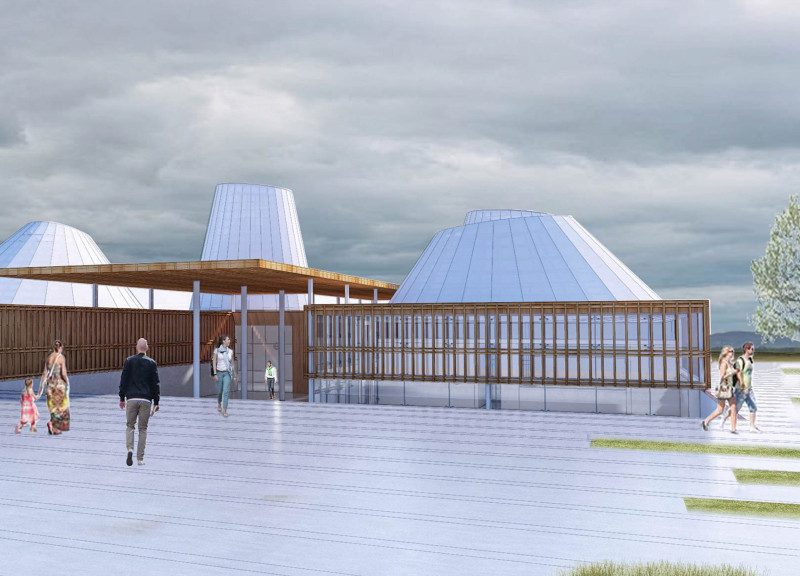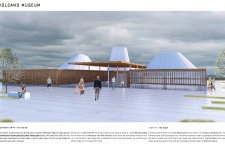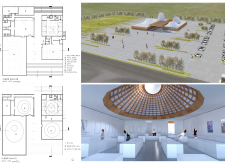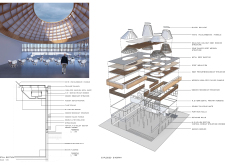5 key facts about this project
The Volcano Museum, located in Iceland, serves as an educational center focused on the country’s volcanic history. Its design is closely tied to the region’s geological features, particularly the Mid-Atlantic Ridge, which separates the North American and Eurasian tectonic plates. The building thoughtfully embodies the concept of tectonic drift through its division into two distinct sections, connected by a central walkway that symbolizes the visible separation of these plates. This integration into the landscape helps to convey the narratives surrounding Iceland's volcanic activity.
Spatial Organization
Inside the museum, the layout enhances the visitor experience. The central walkway divides the space into two tectonic blocks, guiding visitors through various exhibition areas. This arrangement not only reflects the geological rift but also facilitates a sense of discovery, inviting guests to explore the themes related to volcanism. The conical roofs, each representing one of Iceland's notable volcanoes—Eyjafjallajökull, Hekla, Katla, and Hverfjall—act as distinct markers, inviting visitors to enter and learn more.
Material and Structure
The materials chosen for the Volcano Museum are both practical and visually appealing. The exterior consists of white polycarbonate panels and insulated sandwich metal sheets, which ensure durability while giving the building a modern look that complements the surrounding environment. The use of M.S. section primary members provides solid support for the structure, while a wooden secondary framework adds a touch of warmth, creating a blend that connects the architecture with nature. This thoughtful material selection emphasizes the goal of integrating the built form with the landscape it inhabits.
Environmental Integration
The overall massing of the museum strengthens its connection to the surrounding terrain. By positioning the building away from the roadway, it offers a welcoming plaza that becomes a gathering spot for visitors. Elevation changes throughout the design encourage exploration, offering clear views of natural features like the Dimmuborgir Lava fields and Hverfjall volcano. Natural light pours into the museum through the conical roofs, creating lively interior spaces that shift in brightness during the day, highlighting the close relationship between the structure and Iceland’s stunning volcanic landscape.
The arrangement of spaces within the museum is designed for flexibility and interaction, allowing for various exhibits and future growth. As visitors move through the pathways, they engage with the stories of Iceland’s geological past. The architecture invites a sense of curiosity and wonder, as it reflects the striking environment that has shaped the region over centuries. Every detail serves to connect the experience of learning about volcanism with the remarkable landscape outside, emphasizing the importance of nature in this educational journey.






















































